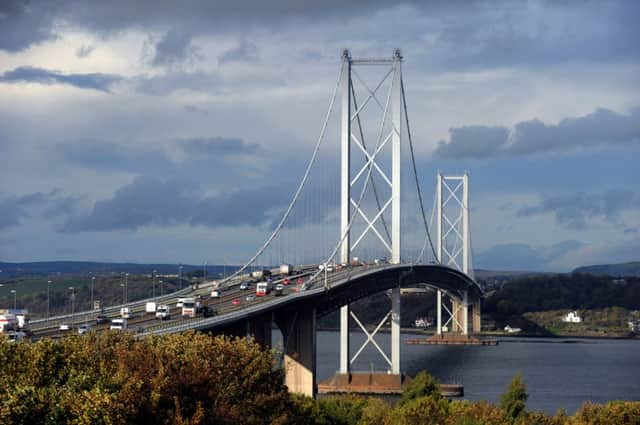Alastair Dalton: Transparency on Forth Road Bridge


However, the door is about to slam shut on public scrutiny of the Forth Road Bridge, when its control is wrested from local authorities by Scottish ministers.
The Forth Estuary Transport Authority (Feta), which runs the crossing, stages the last of its full meetings – which are held in public – in three weeks’ time.
Advertisement
Hide AdAdvertisement
Hide AdThen, on 1 June, Feta will be no more, with private operator Amey taking over on behalf of the Scottish Government’s Transport Scotland agency.
Information about the bridge will be conveyed to local authority officials in future via the unelected Forth Bridges Forum – from which councillors, the press and public are barred.
Thanks to Feta’s open meetings and publicly available reports, The Scotsman has been able to inform readers about important issues affecting the crossing since it was opened in 1964.
This newspaper has revealed key developments on the bridge, from the state of its life-threatening main cable corrosion to news of disruption from major repairs.
Crucially, the free flow of information from Feta has helped assist public debate about the future of the bridge as the replacement Queensferry Crossing has taken shape beside it.
However, that looks likely to markedly change when Feta goes, especially if its helpful and highly-knowledgeable senior officials are ushered out of the limelight.
This will be of continuing concern even though the new bridge is due to open next year to take most of the 23 million vehicles a year which cross the Forth at Queensferry.
A key question remains over what happens to the Forth Road Bridge in the longer term, and being kept informed about whether its corrosion remains in check, and other pending big repairs, are important factors.
Advertisement
Hide AdAdvertisement
Hide AdMinisters might say that, for now, the bridge will be a “public transport corridor” limited to buses and taxis. But if traffic levels rise on the Queensferry Crossing in the future, there will surely be pressure for some vehicles to be transferred to the virtually-empty Forth Road Bridge. That may be cars with one or more passengers, which would be a significant step.
But it is an example of the need for full public knowledge of the state of the bridge to continue, which should be a pre-requisite for any such decision.
Transport Scotland has had a decidedly mixed record on open-ness over its activities. Let’s see whether it can confound the sceptics over these vital bridges.
FOLLOW US
SCOTSMAN TABLET AND MOBILE APPS